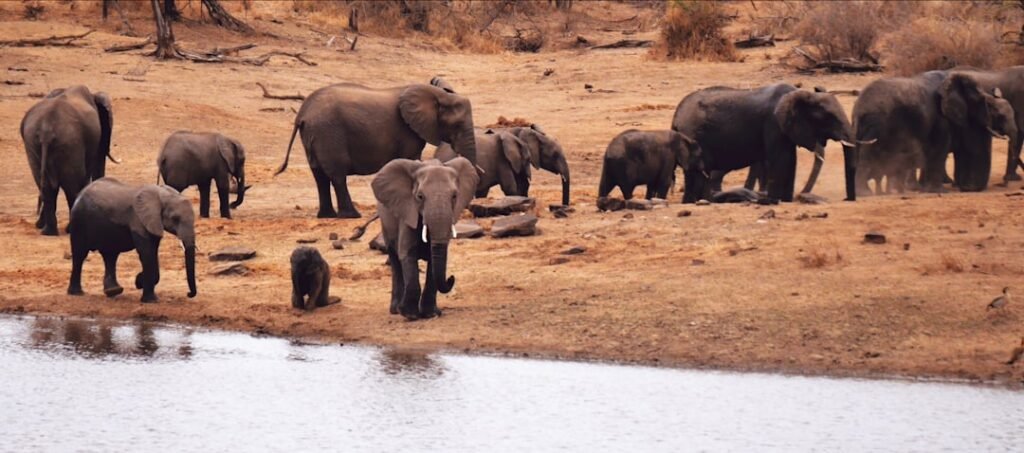On a still dawn in the savanna, an elephant family can coordinate a reunion without a single visible cue. The secret rides on rumbles pitched so low that human ears miss them, yet the ground and air carry them like quiet thunder. For decades, this hidden channel puzzled biologists who saw coordinated movement without obvious signals, a mystery begging for better tools and bolder questions. Today, evidence shows these giants are fluent in infrasound, using long-wavelength calls and even foot-borne vibrations to stay in touch across sweeping landscapes. The result is a sophisticated communication web that links herds through distance, heat, and dust, sustaining social lives as complex as ours.
The Hidden Clues

What if the loudest conversations in the savanna are the ones we can’t hear? Elephants trade low-frequency rumbles whose fundamental tones often dip below the human hearing threshold, yet those signals travel with remarkable efficiency. Field teams noticed families turning, bunching, or setting off together with uncanny timing, hinting at cues beyond sight and typical sound. The rumbles behave like slow ocean swells rather than quick ripples, rolling past obstacles that would scatter higher-pitched calls. That physics gives elephants a quiet line across the noise and distance of open country.
I think the most surprising detail is how ordinary environmental moments become part of the message. Cool, calm mornings act like an acoustic highway, bending sound near the ground and letting it run farther. By contrast, turbulent, hot afternoons can shred those same rumbles, shrinking the communication bubble. In this way, daily weather patterns – wind, temperature, and humidity – shape who “speaks” to whom and when. What looks like chance is really a living system tuned to invisible rules.
Anatomy of a Low-Frequency Voice

Elephants are built for bass. Their immense vocal folds generate long-wavelength energy, while cavernous nasal passages and oral cavities help resonate the sound. The ear, with a sizable pinna and sensitive inner mechanisms, excels at catching slow oscillations that fade quickly for us. Scientists recording close to callers find rich harmonics riding above the infrasonic core, a blend that adds color and carry to each call. Those overtones may help identity checks, like a watermark layered onto a low-frequency carrier.
Inside the head, specialized neural circuits likely track tiny timing differences between ears, turning faint cues into spatial awareness. The trunk, so famous for touch and smell, can also act like an acoustic sensor, lifted and pivoted to scan invisible waves. Put together, these adaptations create a full-body instrument for producing and receiving the savanna’s quietest conversations. It’s less like talking across a room and more like tuning into a long-distance broadcast. The result is power with restraint, designed to reach far without shouting.
Across the Savanna: How Far the Message Travels

Under favorable conditions, elephant rumbles carry several miles, with reports of responses at distances that stretch credulity until physics does the math. Low frequencies lose energy slowly to the air, and their long wavelengths shrug off bushes, grass, and uneven terrain. Temperature inversions at dawn and dusk can bend sound toward the ground, creating an acoustic duct that extends range. Even gentle tailwinds add a boost, nudging calls along like a current under a boat. Distance, here, is not an obstacle but a design constraint the system elegantly meets.
That reach enables coordination on a landscape scale. Families separated by foraging can reassemble with precision, while males on the move can advertise status or intent over a broad area. When threats loom, low rumbles can trigger evasive travel or tighter formation across groups that aren’t in sight. These long links also support social bonding, keeping familiarity alive despite seasonal dispersion. A scattered society stays coherent because its members never truly go out of range.
Decoding Meaning and Identity

Elephant talk isn’t just loudness and distance; it’s context and nuance. Rumbles vary in duration, contour, and timing, and each animal’s calls carry subtle acoustic signatures that function like names. Playback experiments show that families respond differently to calls from known partners versus strangers, suggesting recognition at the level of individual voice. Call sequences change with purpose – reunion, travel, reassurance – forming patterns that amount to basic grammar. To my ear, this is where biology meets linguistics in a way that feels both grounded and astonishing.
Machine learning now helps sift thousands of recordings into clusters, revealing call types that can be linked to behavior and environmental conditions. As datasets grow, researchers see how meaning emerges from combinations and rhythm, not single notes. The story is less about one magic frequency and more about structure, timing, and social memory. That’s a crucial shift, because it points to communication rules that can be learned, preserved, and, sadly, disrupted. Understanding those rules is the first defense against noise that scrambles them.
The Seismic Side of Elephant Talk

Sound isn’t only airborne; it also rides the ground. Elephants detect faint tremors through sensitive receptors in their feet and legs, and bone conduction can shunt those vibrations toward the middle ear. When a call couples into the soil, it can travel along the surface as a seismic wave, arriving with a tactile punch that’s stronger than the airborne version at certain ranges. Observers have seen elephants freeze and lean, as if switching input channels from air to earth. The dual-path system offers redundancy and reach, like having both radio and fiber for the same message.
Terrain matters here. Hardpan soil or packed pathways transmit better than soft, broken ground, shaping where and how signals propagate. Herds seem to exploit those natural corridors during coordinated movement, a behavior that turns geography into a communication asset. This is animal engineering, accomplished without blueprints but guided by evolution and social learning. The elegance is practical: when it really counts, messages find multiple ways through. Redundancy is the opposite of fragility.
Why It Matters

Conservation strategies often focus on counting animals, but numbers alone don’t capture social health. Infrasound reveals invisible highways of information that keep families together and calves safe, and losing those highways can be as damaging as losing waterholes. Expanding roads, mines, and urban edges add low-frequency noise that masks or mimics elephant calls, turning clear messages into static. Compared with traditional monitoring, acoustic approaches expose stress, crowding, and fragmentation long before bodies decline. Ignoring this channel is like watching a film with the audio off and guessing the plot.
There’s a broader ripple, too. Similar low-frequency communication appears in whales across oceans and, in different forms, in other large terrestrial animals, reminding us that scale shapes language. When we protect acoustic space, we safeguard not just hearing but culture – the learned behaviors and bonds that define a species. That insight upgrades corridors from mere travel routes to communication lifelines. It says the savanna is not just habitat; it’s a living network that must stay online. Protect the signal, and you protect the society riding on it.
The Future Landscape

New tools could turn listening into early warning and smarter protection. Solar-powered acoustic nodes, linked by satellite or mesh networks, can map elephant presence and behavior in near real time, while on-device algorithms flag unusual patterns without streaming sensitive data. Researchers are pairing microphones with ground sensors to untangle airborne from seismic paths, improving range estimates and meaning. The same systems can guide anti-poaching patrols, but they demand strict safeguards so data never becomes a roadmap for harm. Privacy for wildlife may sound odd, yet it’s essential when listening can reveal location.
Looking ahead, quieter infrastructure could be a game changer. Road designs that damp low-frequency rumble, timing heavy traffic away from peak communication windows, and protecting acoustic refuges around key watering sites would keep the language intact. International coordination will matter because signals cross boundaries just as elephants do. The challenge isn’t technical as much as political and ethical: build technologies that serve the animals first. If we get that right, the savanna’s low hum will remain a chorus rather than a dirge.
Conclusion

Start by recognizing that sound is habitat. Support organizations that safeguard elephant corridors and back projects that monitor acoustic health, not just headcounts, because early warnings prevent late-stage crises. When you donate or vote, favor plans that curb low-frequency noise near protected areas and fund cross-border conservation that keeps families connected. If you live near wildlands, push for speed limits, truck routing, and construction schedules that respect dawn and dusk, when communication ranges peak. Small choices, repeated widely, become the difference between clarity and chaos.
Stay curious and share what you learn, because awareness spreads faster than any single rumble and helps keep the channel open. The science is moving quickly, and public support will shape which tools get built and how they’re used. In a world that often shouts, elephants remind us that quiet can carry farther. The question is whether we’ll leave enough room for that quiet to travel. Will we listen while there’s still time to answer?

Suhail Ahmed is a passionate digital professional and nature enthusiast with over 8 years of experience in content strategy, SEO, web development, and digital operations. Alongside his freelance journey, Suhail actively contributes to nature and wildlife platforms like Discover Wildlife, where he channels his curiosity for the planet into engaging, educational storytelling.
With a strong background in managing digital ecosystems — from ecommerce stores and WordPress websites to social media and automation — Suhail merges technical precision with creative insight. His content reflects a rare balance: SEO-friendly yet deeply human, data-informed yet emotionally resonant.
Driven by a love for discovery and storytelling, Suhail believes in using digital platforms to amplify causes that matter — especially those protecting Earth’s biodiversity and inspiring sustainable living. Whether he’s managing online projects or crafting wildlife content, his goal remains the same: to inform, inspire, and leave a positive digital footprint.




